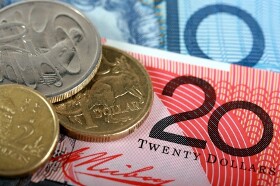The Australian dollar rose against a basket of most-traded currencies, including the New Zealand dollar, which itself was very strong. The likely reason for the Aussie’s strong performance was the positive market sentiment caused by a rally of US and European stocks. Domestic macroeconomic data was also helpful to the currency, while disappointing data from China, Australia’s biggest trading partner, did not have a material impact on the Australian currency.
The Commonwealth Bank of Australia Services Business Activity Index climbed to 58.2 in July from 53.1 in June. The report explained the extremely positive reading:
Growth in services activity accelerated at the start of the third quarter as the gradual reopening of the economy following a loosening of coronavirus disease 2019 (COVID-19) restrictions led to more businesses returning to work.
The Australian Industry Group/Housing Industry Association Australian Performance of Construction Index rose to 42.7 in July from 35.5 in June. The report commented on the result:
This indicates business conditions remained negative across the construction industry in July, but the pace of contraction eased from the recent record lows. Julyâs survey was conducted before the latest restrictions in Victoria.
Meanwhile, the Caixin China Services PMI fell to 54.1 in July from 58.4 in June. Such a big drop was a surprise to experts who were counting on just a mild decrease to 58.0.
Yesterday, the Reserve Bank of Australia decided to keep its key interest rate unchanged at 0.25%. Such a decision was widely expected by market participants.
AUD/USD rallied from 0.7159 to 0.7202 as of 11:34 GMT today. EUR/AUD dropped from 1.6476 to 1.6417. AUD/NZD climbed from 1.0810 to 1.0853, rebounding from the session low of 1.0777.
If you have any questions, comments, or opinions regarding the Australian Dollar, feel free to post them using the commentary form below.
